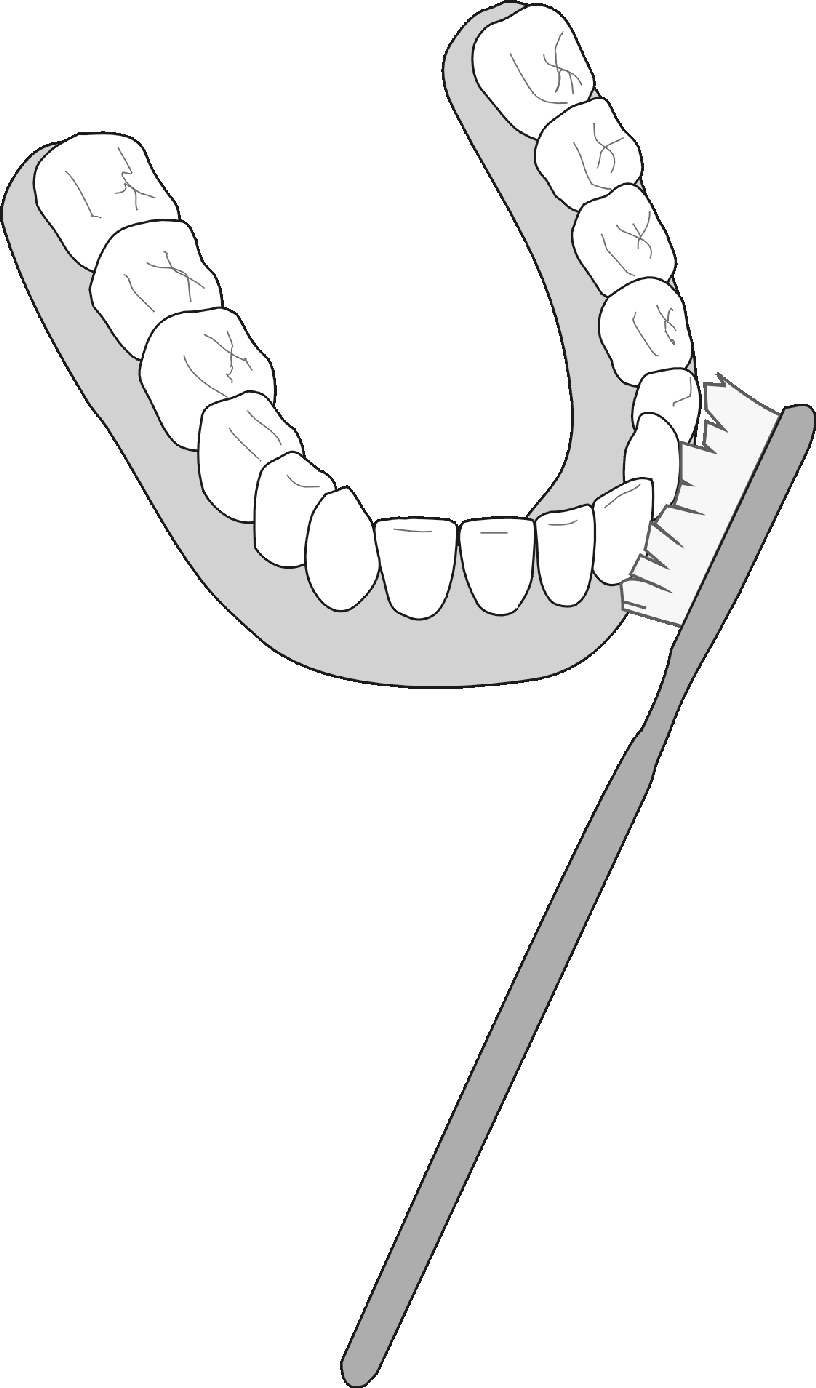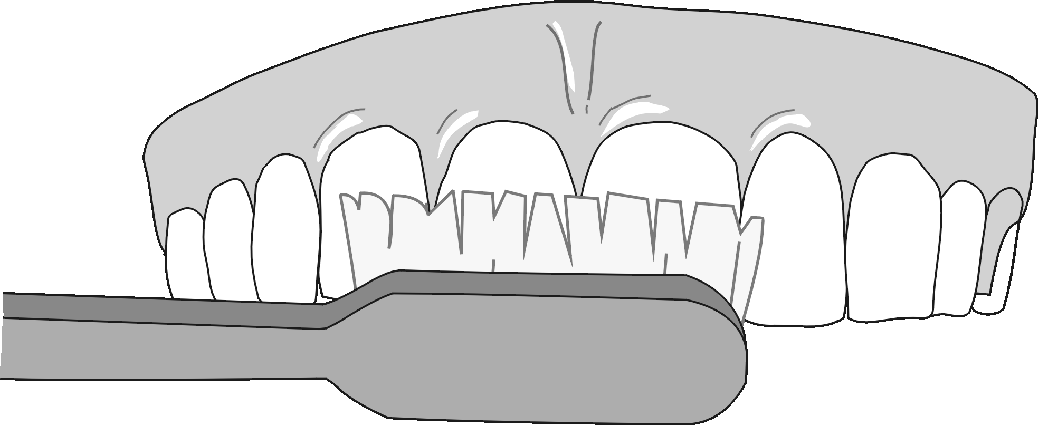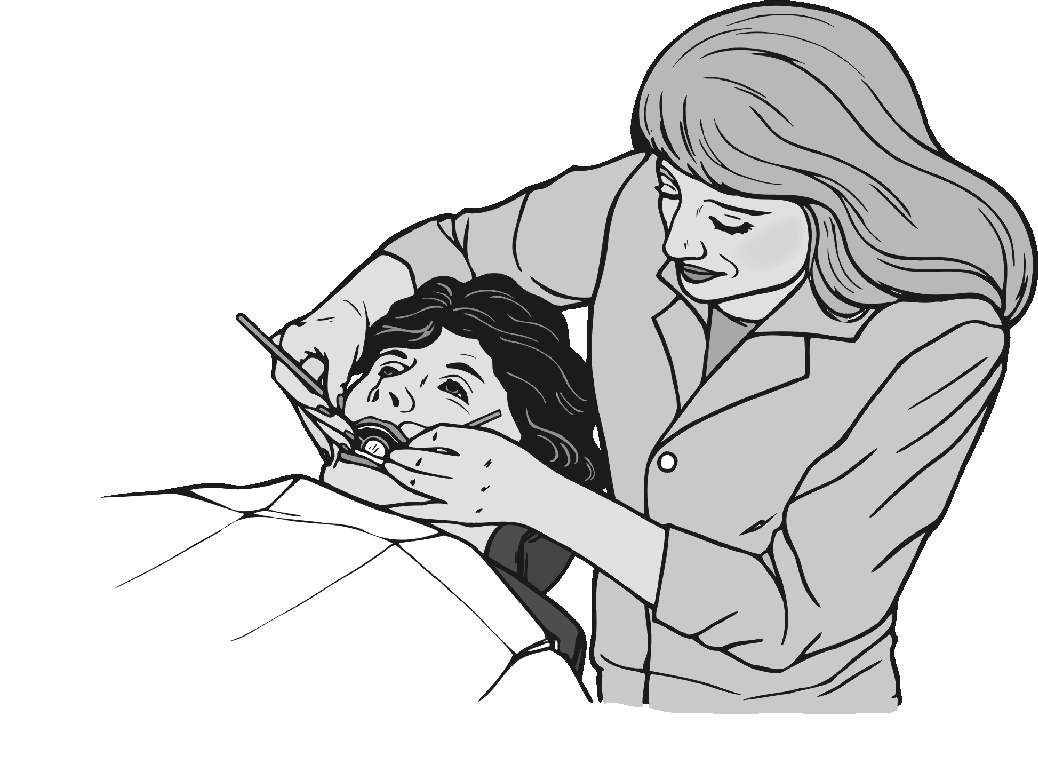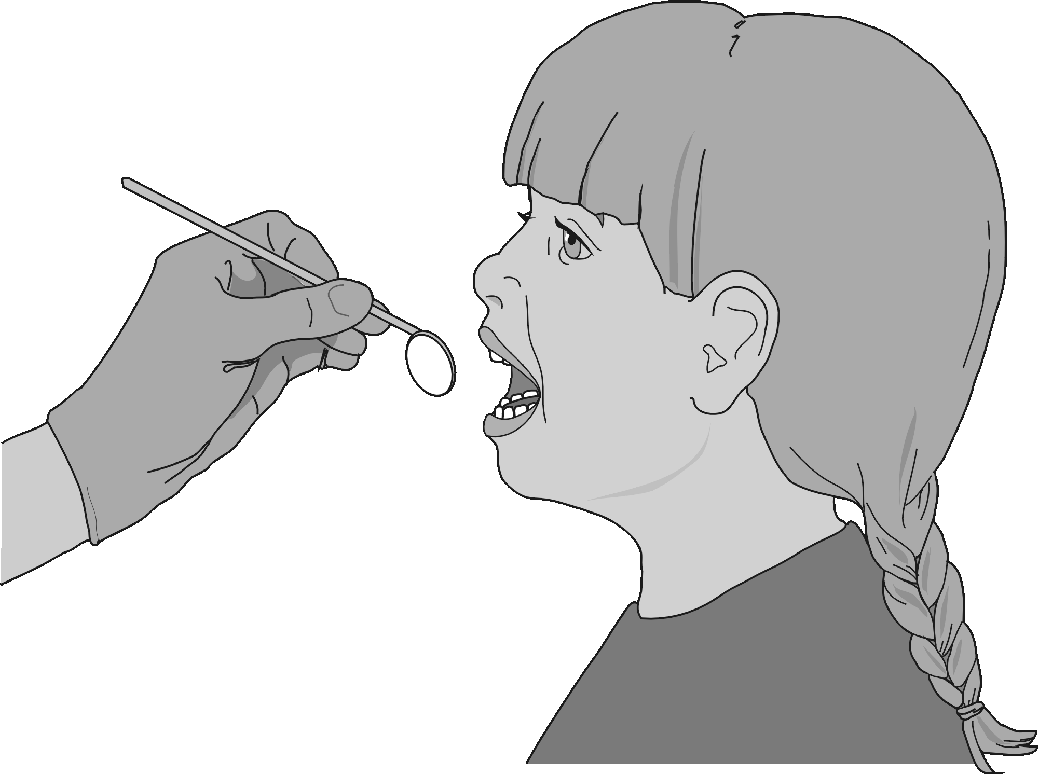Dental Health
 Oral and dental hygiene is an integral part of total body health. Oral (mouth) health problems like dental caries (cavities), periodontal (gum) diseases, malocclusion (crooked teeth) and oral cancer are highly prevalent in India. It is well known that the treatment of dental disease is quite costly. Therefore it is important that an alternative strategy be developed to combat these problems at the level of primary prevention.
Oral and dental hygiene is an integral part of total body health. Oral (mouth) health problems like dental caries (cavities), periodontal (gum) diseases, malocclusion (crooked teeth) and oral cancer are highly prevalent in India. It is well known that the treatment of dental disease is quite costly. Therefore it is important that an alternative strategy be developed to combat these problems at the level of primary prevention.
Teeth are a living part of the body. The outermost hard white cover is known as the enamel. The inner, relatively less hard part is dentine, which surrounds the pulp containing the blood vessels and nerves of the teeth. The teeth remain embedded in the jaw bone, which is covered on the outside by the gum. There are two sets of teeth:
- Primary teeth
These are twenty in number and start erupting in the oral cavity around the age of six months and by the age of two years all twenty teeth have erupted. Primary teeth start falling out at the age of six years and are shed by the age of twelve years and replaced by permanent teeth. First teeth are also called milk teeth. - Permanent teeth
These are thirty-two in number. They start appearing at the age of six years and by the age of twelve to thirteen years, twenty-eight teeth have erupted. The remaining four wisdom teeth erupt only between eighteen and twenty-four years of age.
Be it salty, be it sweet,
rinse your mouth after you eat.
Four Common dental diseases and their prevention:
1. Dental cariesDental caries or tooth decay is a common disease in children as well as adults. It commonly occurs on the chewing surface or below the contact area of two adjacent teeth.
It commonly occurs on the chewing surface or below the contact area of two adjacent teeth.
The cause of this disease is the interaction between the bacteria present in the food and food remnants and the tooth surface. Every person has bacteria in his or her mouth. These bacteria live in a slimy transparent layer covering the tooth. This slimy layer is called plaque. When food remnants come in contact with the bacteria, fermentation starts. The bacteria produce acid as a result of the fermentation, which in turn causes dissolution of the tooth surface leading to dental caries.
2. Gum diseases or gingivitisGum diseases (gingivitis) are also caused by plaque formation. The bacteria present in the plaque form toxic substances that cause inflammation of the gums. If plaque is not removed regularly it may harden to form calculus (tartar).
Teeth are friendly pearly white,
Brush them daily not once but twice.
The major cause of dental caries as well as gum diseases is dental plaque, so control of dental plaque is the main factor in the prevention of these diseases. Dental plaque can be controlled by:
Mechanical methodsThis method is the most important in plaque control. It involves the use of toothpaste and a toothbrush.  For proper cleaning of the teeth, the teeth should be cleaned in such a way that the upper teeth are cleaned in a downward motion and the lower teeth in an upward motion both from the outside as well as the inside. On the chewing surfaces, circular brushing motions help to clean the pits and fissures. At the end of brushing one should not forget to rinse the mouth thoroughly, clean the tongue and massage the gums with a finger.
For proper cleaning of the teeth, the teeth should be cleaned in such a way that the upper teeth are cleaned in a downward motion and the lower teeth in an upward motion both from the outside as well as the inside. On the chewing surfaces, circular brushing motions help to clean the pits and fissures. At the end of brushing one should not forget to rinse the mouth thoroughly, clean the tongue and massage the gums with a finger.
A stitch in time saves nine.
This holds true for dental ailments also.
There are certain chemicals such as chlorhexidine and fluoride that help in reducing bacterial plaque. They are available as mouth rinses but should be used only on the advice of a doctor.
Role of the diet in caries prevention Sugars have a major role in caries causation; therefore, it is very important to reduce sugar intake. Consumption of sweets, especially toffees, chocolates, cookies, cake, pastries, cold drinks, and ice creams, should be avoided, especially in between meals. The golden rule is to use sweets only during major meals. In between meals, one can have fruits, salads, nuts, corns, vegetables and sandwiches.
Sugars have a major role in caries causation; therefore, it is very important to reduce sugar intake. Consumption of sweets, especially toffees, chocolates, cookies, cake, pastries, cold drinks, and ice creams, should be avoided, especially in between meals. The golden rule is to use sweets only during major meals. In between meals, one can have fruits, salads, nuts, corns, vegetables and sandwiches.
After eating sweets, rinse the mouth thoroughly. Vitamins and minerals are very important for normal growth and teeth development; therefore, during childhood, a diet rich in calcium and vitamins should be given. The same holds true during pregnancy and lactation. Bottle feeding of young children at night should be totally avoided.
Decay! Decay! Decay!
Go another way!
I brush my teeth
after I eat.
That protects my teeth
night and day!!
Fluorides make the teeth stronger and more resistant to caries. The simplest method of use of fluoride is by using toothpaste that contains fluoride. Fluoride toothpaste is recommended for all people above six years of age.
Specific control and prevention of gum diseaseWe know that brushing properly reduces plaque and bacteria and therefore it is beneficial for the gums too. Steps to keep the gums healthy include:
- Don’t smoke as smoking is a common cause of unhealthy gums as people age.
- Use oral rinses or plain water after each meal.
- Finger massage your gums and teeth.
- Use dental floss and other inter-dental cleaning devices such as a single tuft toothbrush or rubber tip.
- Have teeth cleaned and polished by dental professionals at regular intervals.
- Visit the dentist regularly, at least once in six months.
I brush my teeth twice a day.
In my life plaque has no say,
I smile all the way and I never smoke.
 In this disorder, there is excessive crowding or spacing between the teeth or the teeth may be placed abnormally forwards or backwards or abnormally rotated.
In this disorder, there is excessive crowding or spacing between the teeth or the teeth may be placed abnormally forwards or backwards or abnormally rotated.
Malocclusion or crooked teeth affect almost 30 – 40% of the children of our country. Many cases are caused by faulty oral habits like thumb sucking, tongue thrusting and mouth breathing in children. The most common cause of irregularity or crowding of the teeth is premature loss of ‘milk teeth’ due to dental caries or other reasons. The ‘milk teeth’ help space the new permanent teeth properly as they come in. Malocclusion may also lead to increased caries or gum disease and temporal-mandibular joint (these two joints, one on each side, are the hinges of the lower jaw) problems.
Prevention of malocclusionTo prevent malocclusion, it is important to keep the milk teeth free from dental caries and to discontinue bad oral habits as soon as possible. Apart from this, planned extractions of over-retained milk teeth can in some cases be options. Always seek advice from a qualified dentist.
4. Oral cancerIn India, this is the third most common cancer. It is common where betel-quid chewing, bidi smoking, alcohol, and tobacco consumption are high. Other risk factors are:
- Poor oral hygiene
- Chronic irritation (e.g., rough teeth, dentures, fillings, etc.)
Cancer of the mouth may remain undetected because initially
the symptoms may be mild. Alertness and prompt attention are needed in the following situations:

- Persistent non-healing ulcer in the mouth for more than two weeks
- A white or red raised patch in the mouth
- Restriction in mouth opening
- A lump or growth in the mouth
- Abnormal loosening of teeth or unexplained bleeding
- Soreness or feeling that some object is caught in the throat
- Difficulty in chewing or swallowing
- Numbness of the tongue or other areas of the mouth
- Hoarseness of the voice
Order! Order!! Order!!!
Pan masala, gutka chewer,
and you, Mr Cigarette Smoker,
may be inviting the curse of cancer.
- Stop various tobacco-related habits immediately and avoid alcohol
- Perform self examination for early detection and treatment of precancerous lesions:
- The oral cavity can be examined easily in two minutes by standing in front of a mirror in good light.
- Both lips, both cheeks, the tongue from the upper side, lower sides and margins, the floor and roof of the mouth, and the throat should be examined.
- On each surface, look for changes in colour or consistency, the presence of swelling or growths or ulcers.
If you find any such feature, please contact the nearest doctor or qualified dentist.
Infant dental careChildren are the future of any country. Keeping our young ones free from disease will give us a healthy, progressive generation in the future. Expectant females and mothers should be informed and educated regarding the following:
- Nutrition is important. A well-balanced diet for expectant mothers is a must for proper development and growth of the baby as well as healthy teeth and gums.
- Expectant mothers should not take any medicine without consulting a qualified doctor. They must always inform the health care provider about the pregnancy, so that any medicine like tetracycline (an antibiotic that discolours the baby’s teeth) may not be prescribed. Other drugs may cause discoloration of teeth.
- At birth, a baby’s mouth is free from bacteria. The germs are transferred into the baby’s mouth from parents during cuddling and kissing. It is important for parents to keep their own mouths clean and avoid kissing on the baby’s mouth. Also sharing of spoons and utensils, etc. should be avoided as far as possible.
- It has been observed that use of a milk bottle is the major cause of early childhood caries. Therefore, mothers should breastfeed the baby for the first year and then to go directly to cup or spoon feeding rather than using a nursing bottle.
- After every feeding the child should be given a sip of water to clear residual milk from the mouth. Also the child should be held upright thereafter from five to ten minutes.
- Mothers should clean the gum pads and the tongue of the infants with a clean, wet, soft cotton cloth after every feed. A clean/boiled soft cotton cloth is wrapped around the index finger and then the upper and lower gum pads should be cleaned in a single sweeping motion each time. After this, the position of the cloth on the finger should be changed and the tongue should be cleaned in a sweeping motion.
- When the first teeth erupt in the mouth of the child, the use of a soft baby toothbrush must be started.
- At the time of tooth eruption, children get an itching sensation in their gums and tend to put different objects such as toys into their mouth. These habits lead to various infections and frequently result in diarrhoea. The mother should keep a close watch on the child’s activities. Fruits and rusks, etc. can be given to help reduce irritation and develop chewing habits.
- It is very important to take care of milk teeth since decay-free milk teeth create a healthy environment for the permanent teeth and guide their eruption into the proper position.
Prevention of dental diseases in infants
1. Brushing two times everyday = healthy teeth
2. Healthy diet = healthy teeth
3. Healthy teeth = healthy body
Food minus sweets = 32 teeth intact
 Children are quite prone to trauma of the oral and facial region, the most common being a fall, getting hit during playing, and cycling and roadside accidents. Sometimes, a small act of negligence can lead to a serious accident, hampering the quality of life of the child and family. Taking care of a few small things can avoid many major and minor mishaps:
Children are quite prone to trauma of the oral and facial region, the most common being a fall, getting hit during playing, and cycling and roadside accidents. Sometimes, a small act of negligence can lead to a serious accident, hampering the quality of life of the child and family. Taking care of a few small things can avoid many major and minor mishaps:
- A child should always be helped when learning to walk up to 3 years of age.
- When a child is learning cycling, the cycle should be supported.
- Instruct children not to keep their hands in their pockets while climbing or coming down stairs.
- Road rules should be taught and followed strictly by children.
- Excessively protruding teeth should be corrected by orthodontic treatment.
- Special mouth guards can be fabricated for children or young adults who participate in athletic/sports events to reduce impact injuries to the teeth and face.
Life is a hit if the teeth are fit.